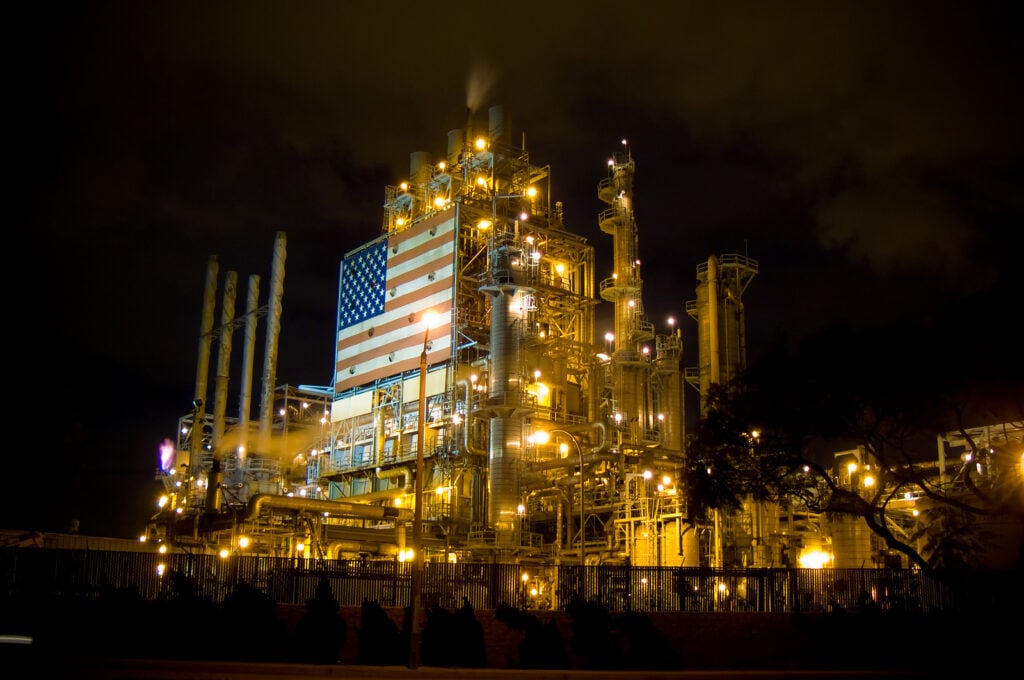All the Energy That’s Fit to Subsidize
This past week House Democrats passed their budget reconciliation bills in the various Committees. So far these bills are 100 percent partisan as no Republicans in any Committee has voted for them. Next, the House Budget Committee will take the various provisions and combine them into a reconciliation bill to send to the Senate. This is moving quickly because House Democrats, along with the Administration, does not want any real oversight of the trillions of dollars they want to spend. Here are some of the bad ideas in these bills that are related just to energy:
Ways and Means Committee:
- Reinstates a 16.4 cents-per-gallon tax on crude oil and imported petroleum products that had expired in 1995 to fund Superfund cleanups of hazardous sites. It also would double the tax rate on sales of certain chemicals. This had also expired in 1995;
- Provides full PTC extension through 2031, with phasedowns for projects beginning construction in 2032 and 2033 and expansion of PTC for solar projects;
- Extends ITC for projects beginning construction after 2021 and before 2032, with phasedowns for projects beginning construction in 2032 and 2033; projects that began construction in 2020 and 2021 would remain eligible for a 26% ITC;
- Expands Section 45Q carbon capture tax credit;
- Creates new tax credits for a variety of renewable energy projects, including energy storage technology, electric transmission property and zero emissions facilities;
- Extends and modifies tax credits for electric vehicles, including elimination of manufacture numerical limitations (currently limited to 200K vehicles per manufacturer);
- Provides direct pay option for PTC, ITC, and 45Q which would be available tax-exempt entities and state and local governments;
- Extends income and excise tax credits for biodiesel at $1 per gallon;
- Creates a new sustainable aviation fuel tax credit;
- Provides a production credit for hydrogen produced at a “clean hydrogen” facility;
- Allows a 30 percent credit for cost of qualified energy efficient property expenditures; includes solar electric, solar water heating, fuel cell, small wind, battery storage, and geothermal heat pumps for the next 10 years;
- Expands energy efficient commercial building deduction;
- Extends energy efficient home credit;
- Creates a bicycle commuting benefit;
- Implements an electric bicycle credit.
There is a ton of tax provisions related to energy. One to highlight is the wind production tax credit (PTC). The PTC has been a critical subsidy for the wind industry for decades. For example, the chart below from the American Energy industry Association demonstrates how dependent the industry wase on small amounts of new wind turbines built when the PTC had expired. As Warren Buffett said “For example, on wind energy, we get a tax credit if we build a lot of wind farms. That’s the only reason to build them. They don’t make sense without the tax credit.”
Nine years ago, the wind industry agreed to a six-year phase out of the wind production tax credit. At the time, the wind industry told reporters that they needed 4-6 years to achieve subsidy-free competitiveness. The reality is that the tax credits generated by the wind PTC has been very lucrative for Wall Street financiers who have created “tax equity markets” to help reduce the tax liabilities of large corporations, which is part of the reason those pushing for more taxes on corporations cite low tax obligations on them.
We keep hearing renewables are the cheapest sources of electricity generation, yet these industries continue to lobby as if they are dependent on the American taxpayer. If it walks like a duck and talks like a duck, it’s probably a duck. The fact is, they are still dependent on the federal dole. If they weren’t, then why would they be asking for more?
House Energy and Commerce Committee:
- $150 billion for the Clean Electricity Performance Program
- $27.5 billion for nonfederal financing of zero-emission technology deployment;
- $18 billion for home energy efficiency and appliance electrification rebates;
- $17.5 billion to decarbonize federal buildings and vehicle fleets;
- $13.5 billion for electrical vehicle charging infrastructure; and
- $9 billion to improve the reliability and resiliency of the electric grid.
- $5 billion to EPA for grants to replace school buses, garbage trucks, and other heavy-duty vehicles with zero-emission vehicles.
One thing to highlight in the Energy and Commerce section is the Clean Energy Performance Program. This requires utilities, upon pain of stiff fines, to increase their use of zero-carbon dioxide emitting sources. As the American Energy Alliance has explained, the subsidies in this plan could lead to some renewable producers getting paid $210 a MWh for electricity worth $25 a MWh.
House Natural Resource Committee:
- Increase leasing fees and royalty rates for onshore and offshore oil and gas production;
- Require royalties to be paid for methane that is vented or flared (which in many cases is due to lack of permitted pipelines across federal lands);
- Impose a leasing moratorium on oil and gas exploration and production in the Atlantic and Pacific coasts as well as the eastern Gulf of Mexico;
- Repeal the authorization for drilling in the coastal plain of the Arctic National Wildlife Refuge and void nine leases the federal government has already awarded legally;
- Increase the royalty rate on mining revenue; and
- Withdraw more than 1 million acres around the Grand Canyon from mineral leasing.
These provisions continue to make it obvious that President Biden and his allies are not serious about “Made in America.” The White House has begged OPEC+ to produce more oil and at the same time makes it more difficult to produce oil and natural gas in the United States.
There are massive mineral requirements for wind, solar, batteries and other zero-carbon dioxide emission technologies. As Mark Mills wrote in the Wall Street Journal, “The IEA finds that with a global energy transition like the one President Biden envisions, demand for key minerals such as lithium, graphite, nickel and rare-earth metals would explode, rising by 4,200%, 2,500%, 1,900% and 700%, respectively, by 2040.” However, despite the need for massive amounts of minerals, this bill and other Administration policies is making it harder and more expensive to mine these critical minerals in the United States. Instead, the United States will be more dependent on China given that China is the world’s largest processor of copper, lithium, nickel, cobalt, and rare earths.
Conclusion
Our energy system is changing. There is no doubt about that. For a host of reasons, only some of which are market related, we have seen large price decreases for wind, solar, and batteries over the past 10 years. But at what price? The American people should be choosing which energy sources best meet the requirements of their lives and not have legislators restricting the types of sources of energy people can use. This is especially true when House Democrats, without any votes from Republicans, are spending literally trillions of dollars with very little public oversight or input and creating a system which eerily resembles the one that has resulted in astronomical price increases in Europe for consumers.
This reconciliation package will further drive up inflation. It is telling that even President Obama’s chief economist, Larry Summers, is warning about inflation.
This reconciliation package will reduce our domestic production of energy while making us more dependent on foreign sources and particularly Chinese mineral imports.
Internationally, we are seeing much higher electricity prices in Europe and yet House Democrats and the White House want us to have an electric grid and Rube Goldberg-like electrical production system more like Europe’s.
The reconciliation package is deeply flawed and will gravely injure the United States and our standing in the world, while enhancing the position of China as the leading manufacturer of the new energy equipment that would force Americans to buy.




